Last updated on March 16th, 2025 at 01:45 pm
A few years ago, my parents hired a reputable SEO company for their small business. However, after a few months, they could tell something was off. They weren’t seeing any impact. They got reports but had no idea what they meant. And, the company never really told them what they did.
If you are completing SEO yourself, or have hired another company to complete your SEO, you might ask how you know it’s actually working? You might have heard that SEO is a long-term game, so at what point do you call a quits when the needle isn’t moving for you?
Well, in this post we are going to answer that. We are going to learn how to check yourself if your SEO is making a difference. We are also going to talk about when you should start seeing a difference in your SEO. So let’s get started!
Watch The Video
First, What Is SEO?
SEO, short for search engine optimization, is the process of optimizing a website for search engines, such as Google. Some examples of optimizations might be making the website faster, improving the content on the website, or adjusting technicals of the website like meta tags.
The goal of SEO is to improve the organic (free, not pay per click) ranking of the website on search engines. Ultimately, with a better ranking on search engines the more exposure you can get from possible customers of your company.
That being said, the SEO can take a while before it starts working. Let’s learn why and how long.
How Long Does SEO Take?
On average, most professionals with say improvements to your SEO will take 3-6 months which is for the most part true.
This is because search engines, like Google, crawl the website for all the websites top down for the most part. So, it starts with the most popular content and follows every link available on those websites, and continues down until it finds a website that is linking to yours. Just like a tree starts with the root and branches off.

It could also find your website by submitting your sitemap to Google Search Console, but that’s a conversation for another time.
Therefore, if you have a brand new website, it could not only take 6 months for Google to ultimately find your website but also have enough trust in your site to start showing in search results.
Not only does Google want results that answer the search query, but Google wants to show websites it can trust and that are not deceptive.
If your site is not new, it may only take 3 months for changes to start appearing in search engines since your website already is trusted by Google, it just needs to crawl the new content.
Now that we know what SEO is and why it can take 3-6 months before you start seeing a difference, how do you know it’s making a difference? Let’s take a look.
Position Tracking
Position tracking is the practice of tracking your web pages’ organic rankings on Google over time. If you are a plumber in Orlando, FL for example, you will want to track your ranking for the search query for “Plumbers in Orlando, FL” over time. Here’s what position tracking might look like in a chart:
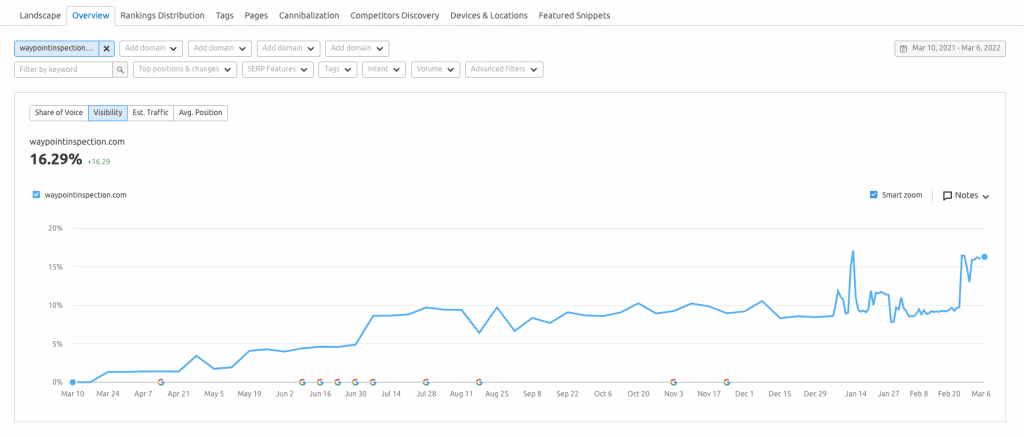
Based on this example, we can see waypointinspection.com has grown in visibility from March 10, 2021, to March 6th, 2022 by about 16%.
Now, it’s also important to review each key term’s ranking. Generally speaking, you will want to rank your keywords in the top 10 to be on the first page of Google. If your key term rankings are greater than 10, most likely, you are not receiving any traffic.
Here’s what that might look like in a table.
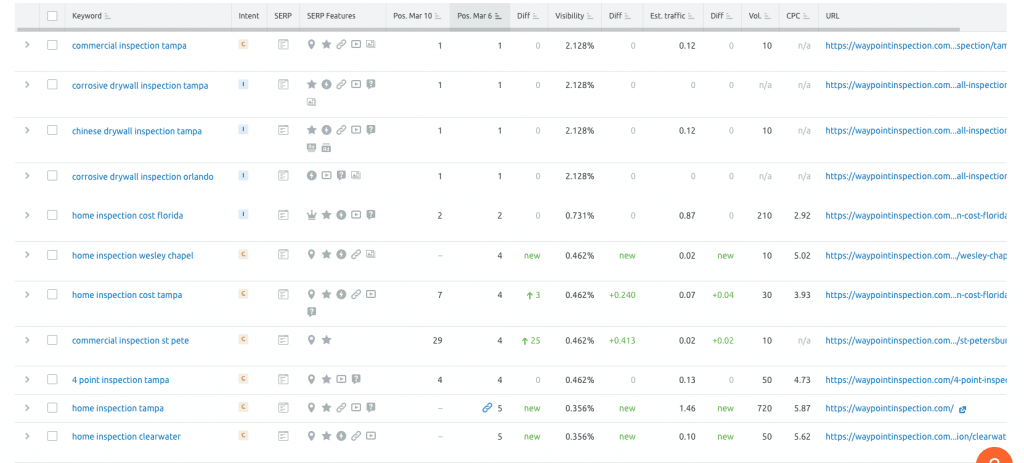
From this table, we can tell this company is ranking really well for some of its key terms by the column labeled “Pos. Mar 6” which stands for the Google position on March 6th, 2022.
Showing your position tracking over time is one of the ways you can track SEO performance and generally you will need SEO software to track this. So if you are working with an agency, they should be able to show you this.
The next factor we can look into is organic traffic.
Organic Traffic
Organic traffic is another critical factor to track your SEO performance. Organic traffic is simply just visitors to your website from search engines that are not paid for.
Luckily, you do not need SEO software to track your Organic Traffic. You can track your organic traffic for free using Google Analytics. If you have no idea how to set up your Google Analytics account or how to look at it, just reach out to us and we’d be happy to assist you.
In this example, we are going to use the SEO Software again as I find their charts to be a lot easier at conveying data.
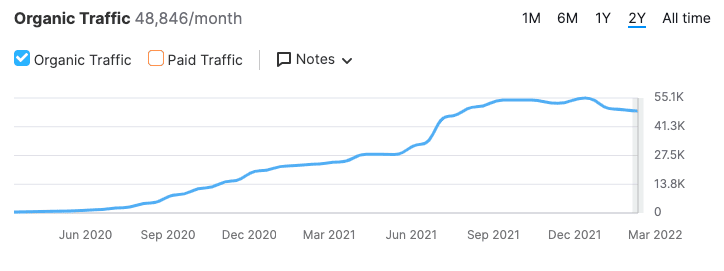
In this example, again from WaypointInspection.com, we can see estimated organic traffic over time. In the last 2 years, this company has grown its organic traffic to over 48,000 visitors per month.
Getting more visitors to your site can increase customers, backlinks, and general web authority so it’s another critical pillar of SEO.
Backlinks
Backlinks sound mysterious, but it’s super simple. When someone likes content or wants to reference it, they share it. Just like I might link another website in this post.
The more backlinks your website receives, the more chances Google will crawl your website and the more authoritative your website may be received. Increasing backlinks is one of the single best ways to improve rankings and SEO, but how do you do it?
Real backlinks cannot be bought, traded, or asked for. In fact, Google says exactly this in the Webmaster Guidelines. So, if you work with an SEO company that is asking on your behalf, purchasing backlinks, or participating in link-for-link schemes, it won’t work.
Instead, focus on quality content. The better the content, the more likely people will want to link to your content. And yeah, it takes time and it’s not easy. But that’s the whole point! You need to have an authoritative voice to be authoritative on Google, you can’t fake it.
Your SEO company can track the number of backlinks you have over time using the software. If you are doing SEO on your own, you can just track your organic traffic over time instead. Generally speaking, if you are increasing traffic, more than likely your backlinks are increasing as well.
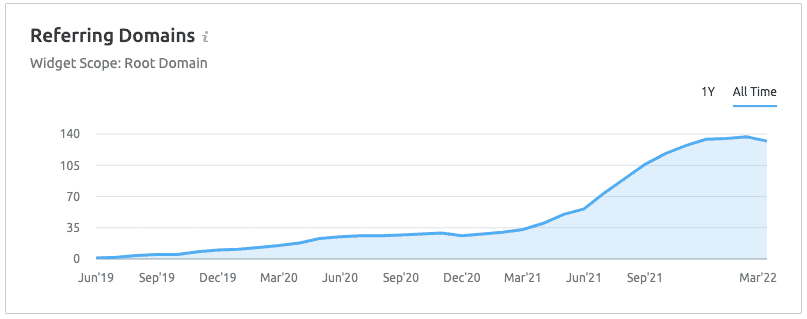
SEO Return on Investment
The last part I like to look at to check for SEO performance is the return on investment. Ultimately, a business needs to make money so if you are paying for SEO and not getting more money back then why do it?
The problem is SEO ROI can easily be tricked to consumers by SEO companies and it’s also hard to track.
To track SEO ROI, you are going to need lead tracking that tracks where every call and website form entry came from. Here’s an example of what that might look like in practice.
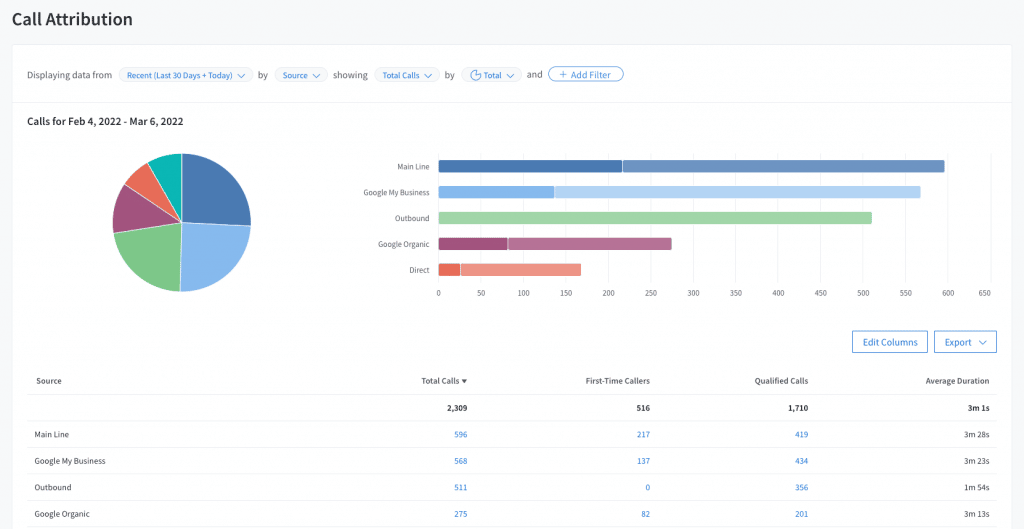
It’s not good enough to ask customers how they found you because 9 out of 10 times, customers say the wrong thing. They may say Google when they clicked on your advertisement on Google. They might say a referral source when they actually did a Google search too.
Next, you need enough data. If you start SEO and lead tracking at the same time, how do you know the leads you are getting from Google then were not already coming to you in the first place? Ultimately, you have to track leads over a prolonged period of time to see if there’s an increase in leads from search engines. Moreover, you have to take into account business seasonality and other marketing efforts.
In general, it’s not easy to track SEO ROI and that’s why so many businesses waste money and do not understand if it’s making an impact.
Common Pitfalls
I started WolfPack Advising when my parents’ company spent money on a bad SEO company. As an owner of a very successful agency today, I see and hear terrible stories. Hopefully, some of these stories help save you and your business from these common SEO pitfalls.
Not Understanding Your SEO Reports
If you are receiving monthly SEO reports from your SEO company, you need to understand what they are showing you. Every time a company has shared their SEO reports with me, they had no idea what they were looking at, and almost always it was a bad report.
It’s why personally and professionally I hate SEO reports and we do not give out SEO reports. Instead, WolfPack meets with customers over video calls every 3 months to review their analytics in detail and answer all questions. I wish more SEO companies did that too.
Improperly Tracking ROI
As I mentioned above, tracking ROI from SEO is hard, but not impossible. When tracking your ROI, use call and form tracking. Then, compare leads/conversions from SEO efforts over a prolonged period of time. If an SEO tells you they brought you in X amount of business in your first 3 months of SEO they are most likely wrong. How do they know that business came from their efforts only and not just because your business already received some business from search engines?
Not Working With Your SEO Company
Search Engine Optimization cannot be performed by an agency alone. It takes effort from both parties.
You should help them with their articles/blogs since you are the expert in your field. A simple review and list of edits/additions before submitting it will suffice.
The same thing goes for new landing pages. Review their work and provide feedback and details. The more awesome content you can post on these landing pages the better. For example, if you know one city is known to have certain issues in your trade compared to another city, share that! That should be posted on your landing pages!
Final Thoughts
Tracking SEO performance is not terribly difficult. Most likely, if you are seeing an increase in your position tracking, organic traffic, and backlinks, your SEO is having a positive impact. However, do not be afraid to dive into lead tracking to see your actual ROI.
WolfPack Advising offers search engine optimization services for home service businesses. Schedule your consultation to learn more.




